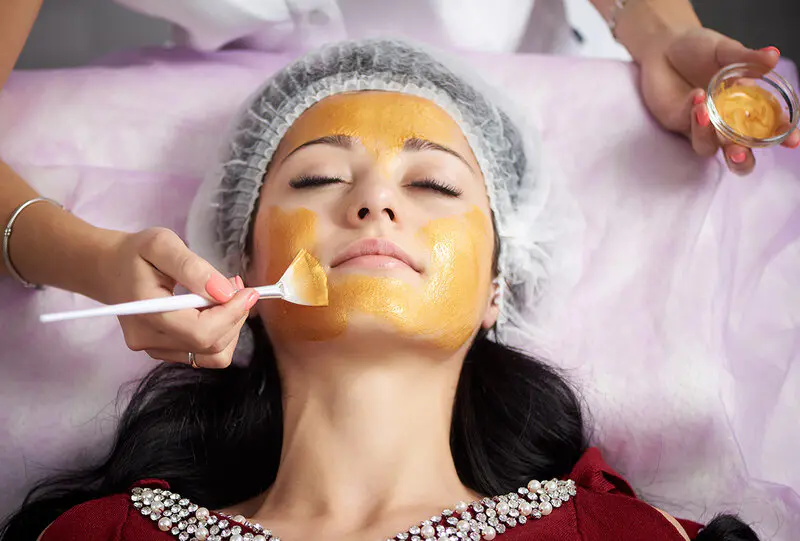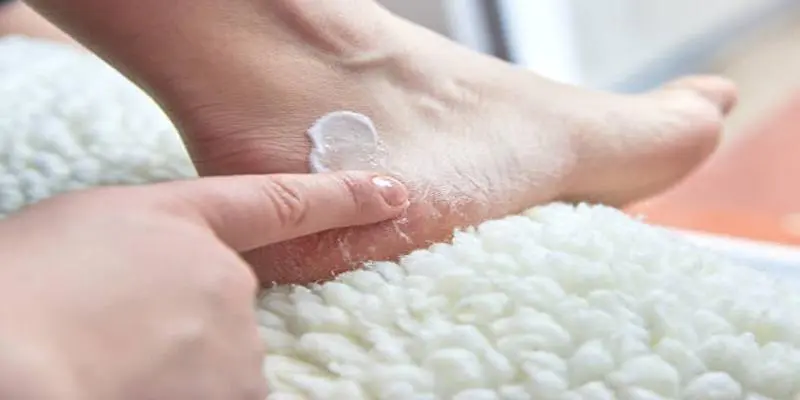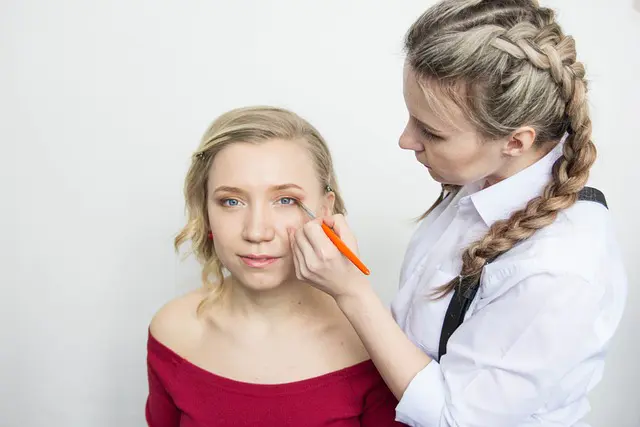
Discover the Radiant Secret: Your DIY Turmeric Face Mask
Unveil the hidden beauty of your skin with a remarkable do-it-yourself Turmeric Face Mask, a natural elixir that has been cherished in skincare rituals globally and throughout history. This mask isn't just a simple treatment; it's a golden key to unlocking your skin's potential for a radiant and youthful appearance. Turmeric, the hero of this mask, is a potent antioxidant that fights off the damaging free radicals that can lead to premature aging. Its anti-inflammatory and antimicrobial properties are exceptional for calming inflammation, reducing acne breakouts, and even fading acne scars. By integrating this golden root into your skincare, you can significantly enhance your complexion's health and vibrancy. 1. Creating Your Golden Face Mask The adventure of making your own turmeric face mask is both thrilling and rewarding. To craft this mask, you'll need to select and blend specific ingredients with precision. Combine finely milled turmeric powder, the rich creaminess of yogurt, and the natural sweetness of honey. Yogurt's lactic acid gently exfoliates, removing dead skin cells, while honey hydrates, creating a synergistic mixture that addresses a variety of skin concerns. When selecting turmeric powder, opt for a fine grind to prevent any harshness on your skin. Use a clean tool to evenly spread the mask across your face. Play with the proportions of the ingredients to find the perfect match for your skin's unique needs. This customization is what makes your homemade mask so effective, offering tailored benefits for your skin. Thought to Consider: You can alter the mask's consistency to your liking. A thicker application provides a more intensive treatment. Cautionary Note: Be aware that turmeric may stain fabrics, so wear old clothing or use a dark towel to prevent stains. 2. Mastering Application for Maximum Effect To fully utilize the benefits of your homemade turmeric mask, it's crucial to apply it correctly. Begin by cleansing your face to clear away dirt and impurities. Then, use gentle strokes to evenly distribute the mask. Let it rest for approximately 15 to 20 minutes, allowing the ingredients to deeply penetrate and work their magic. While waiting, enhance the experience with a facial massage. The soothing, circular motions not only feel luxurious but also improve blood flow, aiding in the absorption of the mask's nutrients. Concentrate on tension-prone areas like your forehead and jawline. This step transforms your routine into a self-care ritual that benefits both your skin and well-being. Thought to Consider: Apply the mask with upward motions to combat the effects of gravity and achieve a more lifted appearance. Cautionary Note: Avoid the eye area to prevent irritation. 3. The Extensive Benefits of Turmeric Face Mask The benefits of a DIY turmeric face mask are vast. It's about more than just an instant glow; it's about fostering long-term skin health. Its antioxidant properties protect against environmental harm, while regular use can stimulate collagen production, maintaining skin elasticity and a youthful appearance. This mask addresses inflammation, manages acne, and imparts a luminous glow. Its antimicrobial properties support clear, healthy skin. Whether you're tackling current issues or preventing future ones, this natural solution offers a comprehensive skincare approach. Thought to Consider: For consistent results, use the mask twice weekly without overwhelming your skin. Cautionary Note: Turmeric may temporarily tint the skin, but this typically fades within hours. 4. Precautions on Staining and Allergies Before making the turmeric mask a staple in your routine, be aware of potential staining, especially on fair skin. Apply a barrier like petroleum jelly or moisturizer around your hairline and eyebrows to prevent this. Also, conduct a patch test to ensure no ingredients cause an allergic reaction, allowing you to tailor the mask to your skin's sensitivities for a safe and effective experience. Thought to Consider: Applying

Effective Treatments for Dry, Chapped Skin on Hands and Feet
Experiencing dry, chapped skin on your hands and feet is not just an aesthetic concern; it can lead to discomfort and even pain, particularly in the colder seasons or for individuals with naturally dry skin. Seeking out effective treatments is important for both the appearance and health of your skin. This extensive guide offers a variety of approaches to address this prevalent issue, from maintaining hydration to employing natural home treatments. By adopting these strategies, you can work towards achieving softer and smoother skin on your hands and feet, which can improve both comfort and self-assurance. Maintain Adequate Hydration To prevent and treat dry, chapped skin, it's crucial to stay hydrated both internally and externally. Here are some suggestions to help you stay hydrated: Drink Ample Water Ensure you consume sufficient water daily to maintain proper hydration levels. Hydrating from within is essential for the health of your skin. Water helps to keep your skin flexible, smooth, and glowing by supporting its elasticity and natural functions. Adequate hydration can combat dryness, flaking, and dullness, resulting in a healthier complexion. Apply Hydrating Creams and Lotions Regularly applying a quality moisturizer to your hands and feet is essential for keeping your skin in good health. Moisturizers help to lock in hydration and aid in the repair of the skin's protective barrier, creating a layer that prevents moisture loss. This routine can help prevent dryness, cracks, and irritation, promoting overall skin health. Make it a daily habit to moisturize your hands and feet to keep them nourished and supple. Utilize Humidifiers Employing a humidifier in your home, especially during dry seasons like winter, can help maintain a comfortable and skin-friendly humidity level indoors. Humidifiers release water vapor into the air, which can alleviate dry skin, prevent respiratory issues, and maintain optimal moisture levels. Regular use of a humidifier can enhance overall well-being by promoting healthier skin and easier breathing, especially in arid climates or during colder months. Practice Gentle Exfoliation Exfoliation is crucial for removing dead skin cells and promoting the growth of new, healthy skin. It's essential for achieving smooth and soft skin on your hands and feet. Use a Soft Loofah or Brush: Gently exfoliate your skin with a soft loofah or brush using circular motions to remove dead skin without causing irritation. Homemade Scrubs: A mixture of sugar or salt with olive oil can serve as an effective, natural exfoliating scrub. Chemical Exfoliants: Products containing alpha-hydroxy acids (AHAs) or beta-hydroxy acids (BHAs) can help exfoliate the skin more deeply but gently. Be Consistent but Gentle: Regular exfoliation is important, but overdoing it can lead to skin damage. Deep Hydration Therapies Deep hydration treatments, such as overnight masks or heavy creams, are essential for healing dry, cracked skin. These products often contain ingredients like hyaluronic acid, glycerin, and ceramides, which are designed to lock in moisture and promote skin repair while you sleep. Applying these treatments to your feet and hands before bed and covering them with cotton gloves or socks can enhance absorption and effectiveness, leading to smoother, more supple skin. Incorporating oils like coconut, olive, or almond into your skincare routine can provide an extra hydration boost. These natural oils are rich in vitamins and fatty acids, which are essential for maintaining the skin's barrier and preventing moisture loss. Regular application after showering can significantly improve skin texture and elasticity. Preventive Care Tactics To bolster your preventive care routine against dry, cracked skin, consider these daily habits: Avoid Hot Water Baths: Extremely hot water can strip the skin of its natural oils, worsening dryness. Opt

Unlocking the Key to Everlasting Radiance: Nurturing Your Skin for a Lifetime
Everlasting radiance is not a fleeting achievement but a result of consistently nurturing your skin to maintain its health and vibrancy. Aging with grace involves accepting the natural progression of time while keeping your skin in optimal condition, regardless of your age. The key to this is establishing a sustainable skincare regimen, upholding wholesome lifestyle practices, and safeguarding your skin from environmental aggressors. In this article, we will delve into actionable advice and methods designed to help you maintain your skin's innate allure over the long haul. We will discuss everything from the significance of sun defense to potent anti-aging components, ensuring you are equipped with the knowledge to preserve your skin's youthfulness and luminosity. 1. Sun Defense: The Pinnacle of Anti-Aging Prevention The primary culprit behind premature aging is exposure to the sun. Ultraviolet rays infiltrate the skin, inflicting damage that results in the formation of fine lines, wrinkles, hyperpigmentation, and a reduction in skin elasticity. While complete avoidance of sunlight is unfeasible, taking measures to protect your skin is the most potent defense against early aging的迹象. 1.1 Selecting an Effective Sunscreen When choosing a sunscreen, it's important to recognize that not all products are created equal. Aim for a broad-spectrum sunscreen that shields against both UVA and UVB rays. UVA rays are linked to aging and wrinkle formation, while UVB rays are responsible for sunburns. Ensure you select a sunscreen with a minimum SPF 30 and apply it daily, even on cloudy days or if you're mostly indoors. Tip: Consider a sunscreen enriched with antioxidants like Vitamin C or niacinamide to fend off oxidative stress and bolster your skin's protective mechanisms. 1.2 Regular Reapplication Applying sunscreen once in the morning is insufficient for full-day coverage. Sunscreen efficacy can diminish due to sweating, swimming, or the skin's natural oils. Reapply your sunscreen every two hours, with increased frequency if you're spending extended periods outdoors. Tip: Keep a compact sunscreen in your bag for convenient touch-ups throughout the day. 2. Skincare Regimen: Crucial Steps for Perpetual Youthful Skin An all-encompassing skincare routine is vital for preventing aging signs and sustaining skin health. While there's no universal routine that fits all, there are several essential steps that everyone should incorporate into their skincare practice. 2.1 Tender Cleansing Cleansing is the inaugural step in any skincare regimen, and it's imperative to utilize a delicate, non-abrasive cleanser. Aggressive cleansers can deplete your skin of its natural oils, resulting in dryness and irritation, which can hasten the appearance of fine lines and wrinkles. Tip: Seek out a moisturizing cleanser containing ingredients such as glycerin, hyaluronic acid, or ceramides to preserve your skin's natural moisture barrier. 2.2 Exfoliation: The Secret to Skin Revival With age, the skin's natural exfoliation process slows, leading to an accumulation of dead skin cells that can dull your complexion. Routine exfoliation aids in removing these cells, unveiling fresher, more refined skin. However, excessive exfoliation can irritate the skin, so aim for gentle exfoliation 1-2 times weekly. Tip: Utilize AHAs (alpha hydroxy acids) or BHAs (beta hydroxy acids) for chemical exfoliation. These acids dissolve dead skin cells without the need for harsh scrubbing. 2.3 Hydration: The Essence of Youthful Skin As we mature, our skin's moisture retention

The Role of Nutrition in Hair Health: Key Dietary Components for Vibrant Locks
While many individuals concentrate on hair care products and styling to achieve shiny, voluminous hair, the role of nutrition in hair health is often underestimated. The nutrients we ingest play a pivotal role in hair growth, strength, and overall appearance. A well-balanced diet rich in essential nutrients can greatly enhance the quality of your hair, transforming it from dull to dynamic and resilient. In this article, we explore the connection between nutrition and hair health, pinpoint the nutrients that promote hair growth, and discuss how your dietary choices can either bolster or undermine the health of your hair. 1. Understanding Hair Growth and Nutritional Needs Hair is primarily composed of a protein called keratin, which is produced in the hair follicles on the scalp. Hair growth is part of a cycle that includes the anagen (active growth), catagen (transitional), and telogen (resting) phases. To maintain hair health and encourage growth, the body must provide hair follicles with the necessary nutrients to support this cycle. Just as other bodily processes require adequate nutrition, hair also demands specific vitamins and minerals for optimal health. A deficiency in these nutrients can lead to hair loss, slow growth, or thinning hair.2. Essential Nutrients for Hair Health Several nutrients are vital for hair growth and health. Here, we examine the most important nutrients for maintaining hair health. 2.1 Protein Since hair is predominantly composed of protein (keratin), it's evident that protein is essential for hair health. A diet lacking in protein can lead to hair thinning or loss, as the body may not have the necessary components to create new hair strands. Top Protein Sources: Eggs Fish (salmon, mackerel, sardines) Poultry Legumes (lentils, chickpeas) Soy products (tofu, tempeh) Greek yogurt Incorporating these protein-rich foods into your diet can help nourish hair follicles and encourage the growth of strong, healthy hair. 2.2 Biotin (Vitamin B7) Biotin, or Vitamin B7, is a well-known vitamin for hair health. It is a water-soluble B-vitamin that aids in the production of keratin, the protein that makes up hair. A deficiency in biotin can result in thin and brittle hair, highlighting the importance of adequate dietary intake. Top Biotin Sources: Eggs Nuts (almonds) Root vegetables (sweet potatoes) Leafy greens (spinach) Fruits (avocados) Whole grains (oats) While biotin supplements are popular for hair health, it's preferable to obtain this nutrient from a balanced diet with whole foods. 2.3 Vitamin C Vitamin C is an antioxidant that is crucial for the production of collagen, a protein that supports hair structure. Collagen strengthens hair follicles and protects against breakage. Additionally, Vitamin C aids in iron absorption, a nutrient essential for hair health. Top Vitamin C Sources: Citrus fruits (oranges, lemons, grapefruits) Berries (strawberries) Peppers (bell peppers) Fruits (kiwi) Fruits (pineapple) Vegetables (broccoli) Vitamin C also combats oxidative stress, which can damage hair follicles and hinder growth. 2.4 Iron Iron is vital for hair health as it helps red blood cells transport oxygen to hair follicles. Without sufficient oxygen, hair follicles may not function properly, leading to slow growth or hair

Embracing an Eco-Friendly Lifestyle: Simple Ways to Go Green
The environmental consequences of human actions are increasingly evident, with issues like climate change, deforestation, and pollution becoming more urgent. Each of us has the potential to make a difference by choosing a sustainable lifestyle that lessens our negative impact on the environment. This article offers practical advice on how to live in a way that is kind to the planet, from waste reduction and energy conservation to sustainable eating and supporting ethical businesses. 1. Embracing Sustainable Living Sustainable living involves making choices that are less harmful to the environment and that preserve natural resources. The goal is to satisfy current needs without jeopardizing the ability of future generations to meet their own. This lifestyle includes considerations around energy consumption, waste management, food choices, and transportation. Sustainability requires deliberate actions across all aspects of daily life. Whether you're aiming to reduce your carbon footprint, save water, or select more sustainable products, every small step can contribute positively to environmental health. The objective is to strike a balance between human requirements and the earth's ability to sustain them. 2. Waste Reduction: Minimizing Your Environmental Impact Waste is a significant factor in environmental harm. The average person produces a considerable amount of waste daily, including food packaging, plastic items, electronic waste, and paper products. To live sustainably, it's essential to cut down on waste at its source and make informed decisions about disposal and recycling. 2.1 Cutting Out Single-Use Plastics Plastic pollution is a critical environmental concern, with vast amounts of plastic entering oceans and damaging marine life and ecosystems. A key strategy to reduce plastic waste is to avoid single-use plastics, such as bags, straws, and bottles, and instead choose reusable options like cloth bags, metal straws, and bottles made of glass or metal. 2.2 Adopting Recycling and Composting Practices Recycling helps to keep materials out of landfills and decreases the demand for new raw materials. Commit to recycling paper, glass, metal, and plastic in accordance with your local guidelines. Composting kitchen waste is also an effective method to reduce waste and produce rich soil for gardening. 2.3 Opting for Bulk Purchasing Buying in bulk can help to cut down on packaging waste. Instead of buying items with excessive packaging, choose bulk options like grains, nuts, and dried fruits. Use reusable containers for storage to further minimize packaging waste. Many stores also offer bulk options for cleaning supplies and personal care products, significantly reducing plastic waste. 2.4 Steering Clear of Fast Fashion The fast fashion sector is infamous for its environmental toll, leading to pollution, water waste, and textile waste. Instead of frequently buying cheap, low-quality clothing, consider investing in high-quality, long-lasting pieces. You can also explore second-hand clothing stores, thrift shops, or clothing swaps as an eco-friendly alternative to purchasing new garments. 3. Energy Conservation: Easy Methods to Save Energy and Lower Carbon Emissions Energy use is a primary driver of climate change, with increased energy consumption leading to higher CO2 emissions. By adopting energy-saving habits at home and work, we can reduce our carbon footprint and decrease greenhouse gas emissions. 3.1 Choosing Energy-Efficient Appliances Energy-efficient appliances consume less electricity and reduce overall energy use. Look for the ENERGY STAR label on appliances, indicating high efficiency. Replacing old appliances with energy-efficient ones can significantly affect your energy bill and environmental impact. 3.2 Utilizing LED Light Bulbs LED bulbs use significantly less energy than traditional bulbs and have a longer lifespan. Switching to LED bulbs in your home can reduce energy consumption and save money over time. It's a simple and cost-effective way to lessen your environmental footprint. 3.3 Disconnecting Electronics When Idle Even when turned off, electronic devices still draw power if left plugged in, a phenomenon known as "phantom" or "standby" power use. To prevent energy waste, unplug devices like chargers, TVs, and kitchen appliances when not in

Embracing the Natural Evolution: Redefining Beauty Through the Ages
The beauty sector has long been captivated by the concept of eternal youth—featuring smooth, unblemished complexions and a relentless chase for the elixir of life. The narrative of aging has typically been one of avoidance, with a plethora of products claiming to halt the sands of time. However, a profound transformation is underway in our societal and beauty industry perspectives on aging. In contemporary times, there is a growing appreciation for the beauty that comes with age, challenging the societal pressure to preserve a youthful appearance at any cost. The intricacies of aging, with its stories etched on our visage, are now seen not as something to dread or erase, but as a natural and empowering phase to be celebrated. This article delves into the reasons why the beauty of aging is garnering the recognition it merits and how the beauty sector is adapting to this cultural revolution. We will examine how accepting the aging process can cultivate a profound sense of self-acceptance, honor our individuality, and result in a more inclusive concept of beauty. 1. The Paradigm Shift in Society's View on Aging Aging is a universal rite of passage, yet for much of history, it has been something to evade, especially in Western cultures where the allure of youth reigns supreme. Aging has often been associated with a loss of worth, beauty, and significance. Particularly for women, unrealistic standards of beauty have positioned aging as a "flaw" to correct rather than an inevitable part of life's journey. Nevertheless, a burgeoning movement aims to alter this narrative, turning aging from a fear into a celebration. This shift is increasingly evident in media, with more seasoned models and actresses defying conventional, youthful beauty standards. Icons like Helen Mirren, Jane Fonda, and Angela Bassett are embracing their natural elegance and embodying an empowered narrative of aging. Social media has been instrumental in this evolution, offering a platform for individuals across the age spectrum to share their personal narratives on aging and beauty. Hashtags such as #AgePositivity, #GreyHairDontCare, and #AgelessBeauty have gained traction as individuals reject the pressures of anti-aging and choose instead to celebrate their natural appearance. This cultural shift is mirrored in the beauty industry, with brands increasingly championing diversity in age, featuring older women in advertisements, and developing products tailored for mature skin. As consumers demand authenticity and inclusivity, the industry is adapting to reflect this new reality. 2. The Beauty Industry's Adaptation to Aging In response to the burgeoning embrace of natural aging, beauty companies are pivoting from youth-focused products to those that highlight the beauty of mature skin. Aging with grace is no longer about defying time but about enhancing and celebrating the skin's natural evolution at every life stage. Anti-Aging vs. Pro-Aging: Embracing the New Perspective Historically, the beauty industry has concentrated on "anti-aging"—products aimed at diminishing or reversing aging signs. From wrinkle creams to Botox, these have been marketed as the ultimate solutions to the "issue" of aging. While such products still have a role, a more holistic approach is emerging—one that emphasizes "pro-aging," or products that support and enhance the natural aging process. Pro-aging products celebrate the concept of aging as a beautiful and inevitable journey, not something to be erased. These products promote healthy, nourished skin and cater to the specific needs of mature skin, such as increasing hydration, enhancing elasticity, and addressing concerns like age spots and sagging. The focus is on amplifying natural beauty, not concealing it. Diverse and Inclusive Beauty Campaigns As beauty brands increasingly acknowledge the importance of representation, older individuals are now being featured in mainstream beauty campaigns. Brands like Dove, Olay, and Lancôme have introduced advertisements showcasing women of various ages and backgrounds, honoring the diversity and wisdom that accompany age. The beauty industry is also recognizing that individuals of all ages require skincare and makeup solutions catered to their unique needs. For instance, foundations are being formulated with ingredients that offer additional hydration and radiance for mature skin. Skincare brands are crafting rich, nourishing formulas that target age-related concerns like fine lines, wrinkles, and uneven texture, while also promoting healthy, luminous skin.